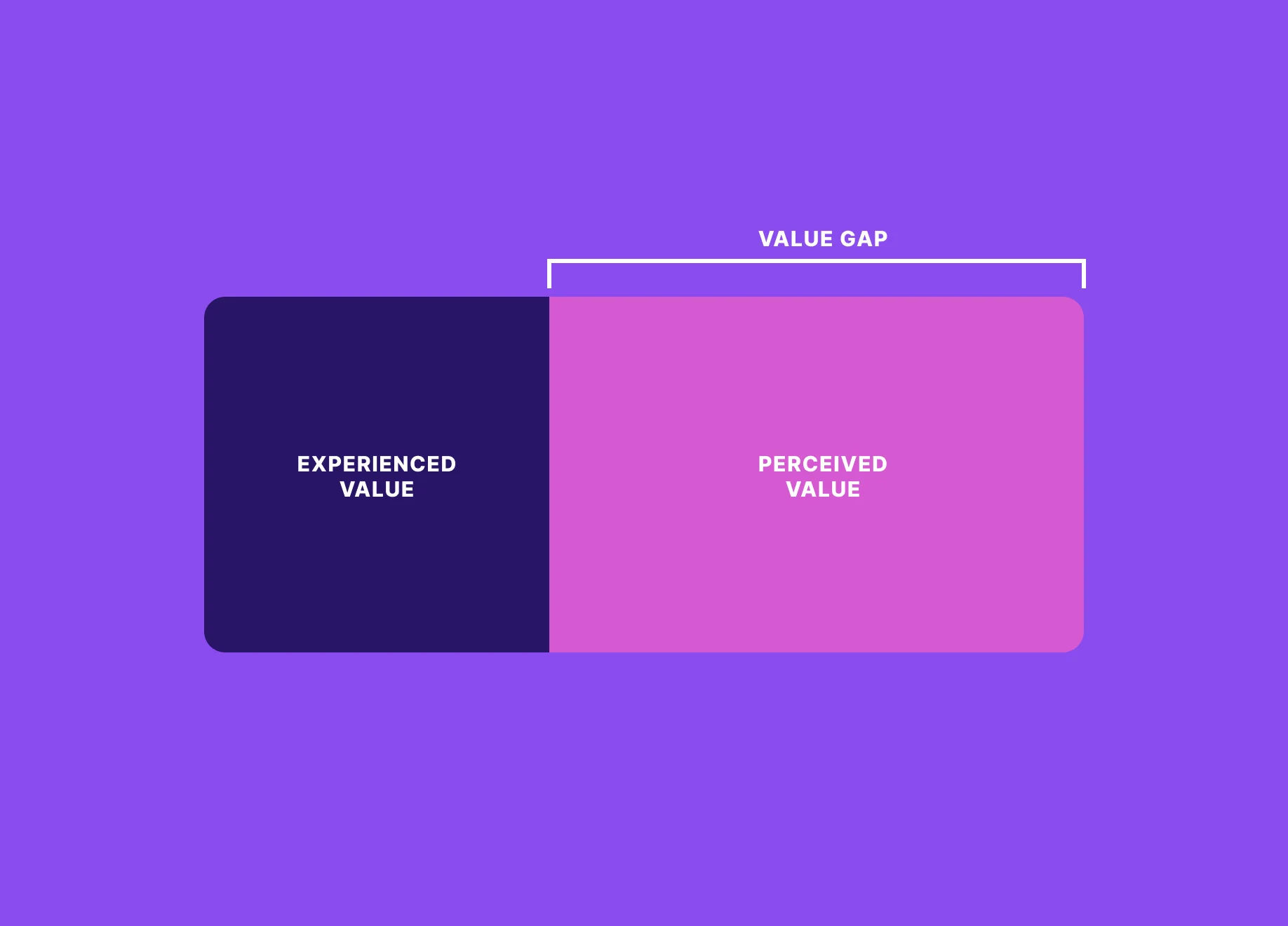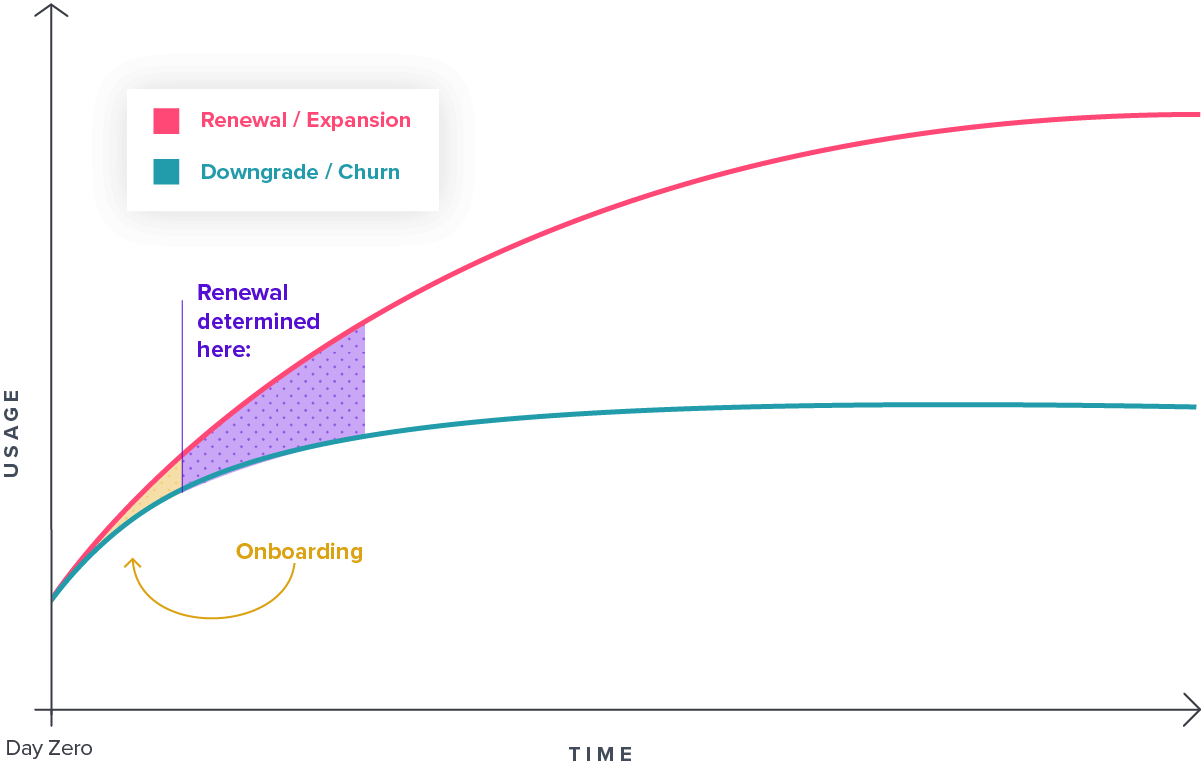Table des matières
Qu'est-ce que l'écart de valeur ?
The value gap occurs when the perceived value and experienced value for a software product don’t overlap, creating a “gap” between the user’s expectations and reality. In Pendo’s product benchmarks report, researchers found that only 30% of users exhibit regular usage in the first 90 days of using a new product, which suggests that most users are not experiencing the value they anticipated at purchase. Often the problem isn’t that new users are incapable or the product is insufficient, but rather that there is an educational barrier preventing customers from discovering value in the app.
Pourquoi l'écart de valeur est-il important ?
If new users can’t easily find value in a product, they are likely to abandon using it altogether, especially since the rise of SaaS applications has made switching costs extremely low. Companies need to remember that customer churn doesn’t happen when the contract ends—it happens when users no longer find your product useful or valuable.
Comment minimiser l'écart de valeur de mon produit ?
In order to close (or prevent) the value gap, companies need to implement an effective onboarding experience so that new users learn and find value in the product as quickly as possible. Although there are many ways to administer onboarding, many companies are turning to an in-app approach. With in-app onboarding, companies are able to provide contextual information to new users as they navigate the product, and help them utilize the functionality that’s most relevant to them.
Citrix, for example, used product analytics to identify a certain trial usage pattern that converted to paying customers at a higher rate than others. The team then created an in-app onboarding flow that steered trial users toward those particular features, and was able to increase their trial conversion rate by 28 percent.
Here are some best practices for building an effective in-app onboarding strategy:
- Simplifiez les choses : Essayez de rendre votre flux d'onboarding aussi simple que possible. Il faut absolument éviter que les utilisateurs se sentent désorientés dès leurs premiers pas avec votre produit.
- Prévoyez différents styles d'apprentissage : Dans la mesure où chacun apprend différemment, envisagez plusieurs formats (vidéos, instructions illustrées, etc.) et plusieurs façons pour les utilisateurs de progresser dans le processus d'onboarding (p. ex. en les laissant consulter les sujets dans l'ordre de leur choix).
- Personnalisez autant que possible : Votre produit sert probablement à plusieurs types d'utilisateurs, il est donc important d'adapter le processus d'onboarding aux différents segments d'utilisateurs, à leurs besoins particuliers et aux workflows nécessaires à leur réussite.
- Désignez un responsable : Assurez-vous de définir clairement une personne responsable de l'onboarding (qu'il s'agisse d'un rôle dédié à l'onboarding, ou un chargé de réussite produit ou client), et incluez les bonnes parties prenantes dans les processus de planification et d'exécution.
Vous aimerez peut-être aussi

La vérité sur l'écart en matière d'expérience logicielle, et pourquoi il est impératif de le combler

Introduction à la gestion de produit : l'écart de valeur




